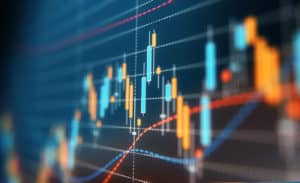Adler Smith, senior associate at Aite-Novarica Group, looks at evolving demands from hedge funds as well as how algorithm usage is changing, with reference to The TRADE’s Algorithmic Trading Survey: Hedge Fund 2022.
 In 2021, the hedge fund industry posted double digit returns for the second year in a row, but not everything was rosy. According to the Barclays Hedge Fund Index, hedge funds returned 10.22% in 2021, significantly lagging the S&P 500, which posted a 26.89% return over the same period.
In 2021, the hedge fund industry posted double digit returns for the second year in a row, but not everything was rosy. According to the Barclays Hedge Fund Index, hedge funds returned 10.22% in 2021, significantly lagging the S&P 500, which posted a 26.89% return over the same period.
Last year’s performance was truly non-linear, punctuated by disparate returns across strategies. Managing those funds also became more complicated. Remote work, meme stocks, and volume spikes from individual investors added to the complexities of optimising liquidity. With the Barclays Hedge Fund Index down 9.58% through the end of June, 2022 has been another challenging year.
With that as background, how are hedge funds looking at electronic trading and the algorithmic trading providers who support them? A few insights from this year’s Algorithmic Trading Survey: Hedge Fund 2022 conducted by The TRADE offer good perspective.
How algorithm usage is changing
Hedge funds largely rate their providers on par with 2021 as the average score of 2022 respondents declined slightly—from 5.82 in 2021 to 5.80. This is not so far off 2020’s average of 5.77. Either provider offerings are not improving or, more likely, traders’ expectations are increasing.
Most categories received lower ratings this year compared to last, but the range of average scores continued to tighten in 2022. Although there is still room for improvement, this indicates further convergence of provider services and less differentiation across the top providers.
Here are a few of the key takeaways Aite-Novarica Group saw in this year’s survey:
- Execution quality remains top of mind, with hedge funds desiring additional features including further customisation capabilities, more control, deeper dark aggregation, and increased reduction of market impact.
- Hedge funds reported that the most impactful factor in choosing algorithmic providers is customer support, followed by ease of use, execution consistency, increased trader productivity, and dark pool access.
- The top four reasons hedge funds use algorithms are ease of use, to reduce market impact, to increase trader productivity, and consistency of execution performance.
- Hedge funds of all sizes (except those with more than US$50 billion under management, who are typically also managing traditional assets) on average increased the number of algo providers they use. Hedge funds with US$1 billion-$50 billion under management reported using more than five algo providers on average, more than respondents at firms of other sizes.
- Hedge funds increased their use of every type of algorithm, with dark-liquidity-seeking algos the most frequently used.
What lies ahead?
Providers are focused on delivering against the highest priorities of the market. The increase in electronic trading and automated trading for asset classes outside of equities will grow in the coming year(s) as a result of a variety of factors and market evolution. These factors include growth in non-equity index products or basket products like actively managed fixed income ETFs, fixed income portfolio trading, as well as interest rate volatility fueling the growth of the FX market. The increase in new liquidity-accessing options will then present a value proposition for firms looking to access those liquidity venues efficiently.
However, whether this will lead to hedge funds looking for asset-class-specific providers and subsequently growing their average number of providers used or instead diversifying the types of algos and automated trading solutions used by asset class and strategy and holding the number of providers relatively constant remains to be seen.
Providers have generally improved their offerings over the years, and there have been efforts on both sides to consolidate relationships, but at the same time there remains a desire for firms to diversify vendor exposure and capabilities, leading funds to engage in additional provider relationships.
This blog post was adapted from the full analysis of The TRADE’s Algorithmic Trading Survey: Hedge Fund 2022. You can read the full survey here. To discuss this topic further, please reach out to me at asmith@aite-novarica.com.